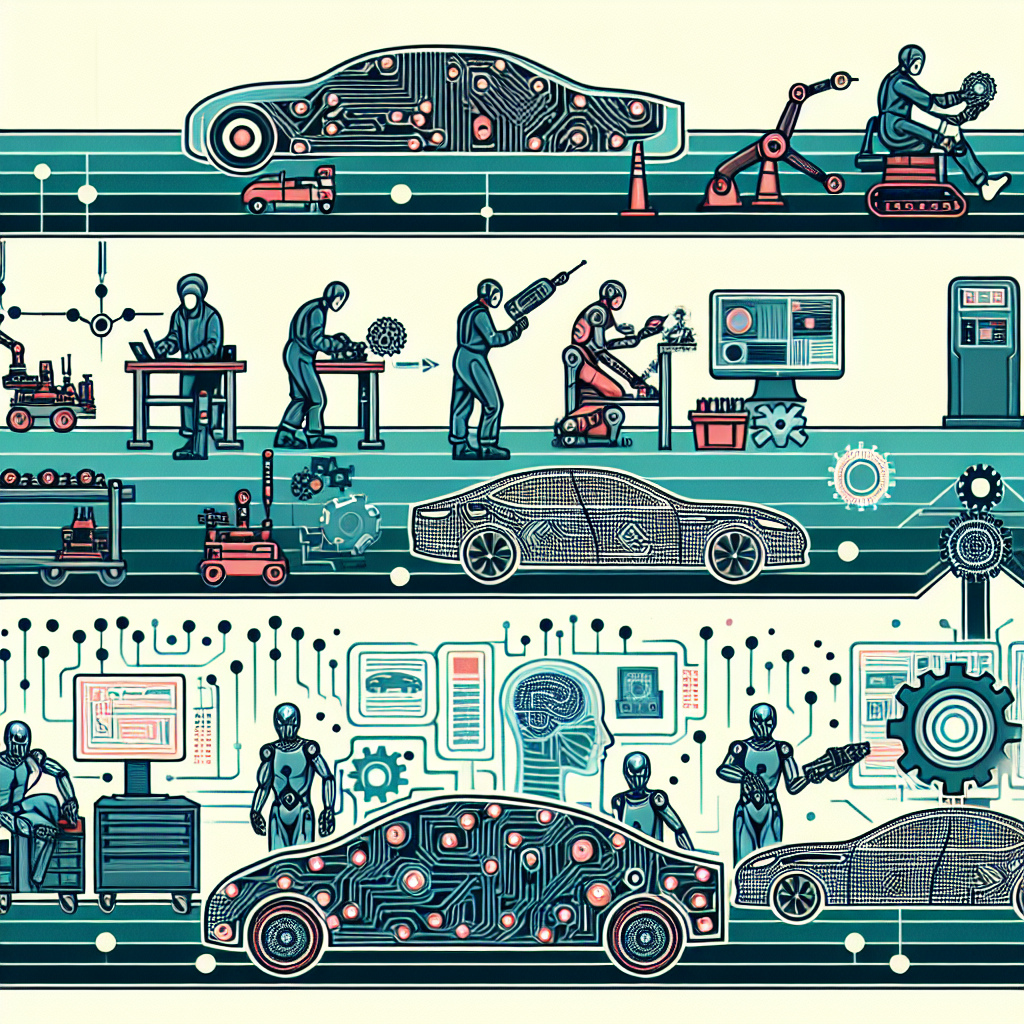The automotive industry has long been at the forefront of technological advancements, and the integration of artificial intelligence (AI) automation is no exception. As technology continues to evolve, the automotive industry is continuously seeking new ways to improve efficiency, safety, and overall performance. AI automation has become a crucial tool in achieving these goals, revolutionizing the way vehicles are designed, manufactured, and driven.
The Evolution of AI Automation in the Automotive Industry
AI automation in the automotive industry has come a long way since its inception. From the early days of basic automated processes to the sophisticated systems in use today, AI has transformed the industry in numerous ways. Here are some key milestones in the evolution of AI automation in the automotive industry:
1. Automated Production Processes: The use of robots in manufacturing plants has been a game-changer for the automotive industry. These robots can perform a wide range of tasks, from welding and painting to assembly and quality control. The use of AI algorithms allows these robots to work more efficiently and accurately than ever before, leading to increased production output and reduced costs.
2. Autonomous Vehicles: Perhaps the most significant advancement in AI automation in the automotive industry is the development of autonomous vehicles. These vehicles use AI algorithms to navigate roads, detect obstacles, and make driving decisions without human intervention. Companies like Tesla, Google, and Uber have been at the forefront of developing autonomous vehicle technology, with the goal of improving safety and reducing traffic congestion.
3. Predictive Maintenance: AI automation is also being used to improve vehicle maintenance and repair processes. By analyzing data from sensors and onboard systems, AI algorithms can predict when a vehicle is likely to require maintenance or repairs. This proactive approach to maintenance not only reduces downtime but also helps prevent costly breakdowns.
4. Enhanced Driver Assistance Systems: AI automation has also led to the development of advanced driver assistance systems (ADAS) that help improve safety and convenience for drivers. These systems use AI algorithms to detect obstacles, monitor traffic conditions, and assist with parking and lane-keeping. Features like adaptive cruise control, lane departure warning, and automatic emergency braking have become standard in many new vehicles.
5. Personalized User Experience: AI automation is also being used to create more personalized user experiences for drivers and passengers. From voice recognition systems to predictive navigation, AI algorithms can tailor the driving experience to individual preferences and habits. This not only improves convenience but also enhances overall satisfaction with the vehicle.
FAQs
Q: How does AI automation improve vehicle safety?
A: AI automation can improve vehicle safety by enabling features like autonomous emergency braking, lane-keeping assistance, and adaptive cruise control. These features use AI algorithms to detect potential hazards and assist the driver in avoiding accidents.
Q: Are autonomous vehicles safe?
A: While autonomous vehicles are still in the early stages of development, studies have shown that they have the potential to be safer than human-driven vehicles. Autonomous vehicles are designed to follow traffic laws and avoid collisions, leading to a reduced risk of accidents.
Q: How does AI automation impact the automotive industry workforce?
A: While AI automation has the potential to streamline production processes and improve efficiency, it may also result in job displacement for some workers. However, AI automation also creates new opportunities for skilled workers to develop and maintain AI systems.
Q: What are some challenges in implementing AI automation in the automotive industry?
A: Some challenges in implementing AI automation in the automotive industry include data privacy concerns, regulatory hurdles, and the need for specialized training for workers. Additionally, the high cost of developing and implementing AI systems can be a barrier for some companies.
In conclusion, the evolution of AI automation in the automotive industry has revolutionized the way vehicles are designed, manufactured, and driven. From automated production processes to autonomous vehicles and personalized user experiences, AI automation has the potential to improve efficiency, safety, and overall performance in the automotive industry. As technology continues to advance, the automotive industry will likely continue to embrace AI automation as a key tool for innovation.

